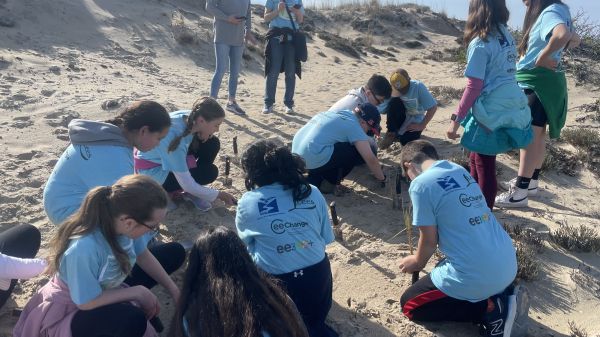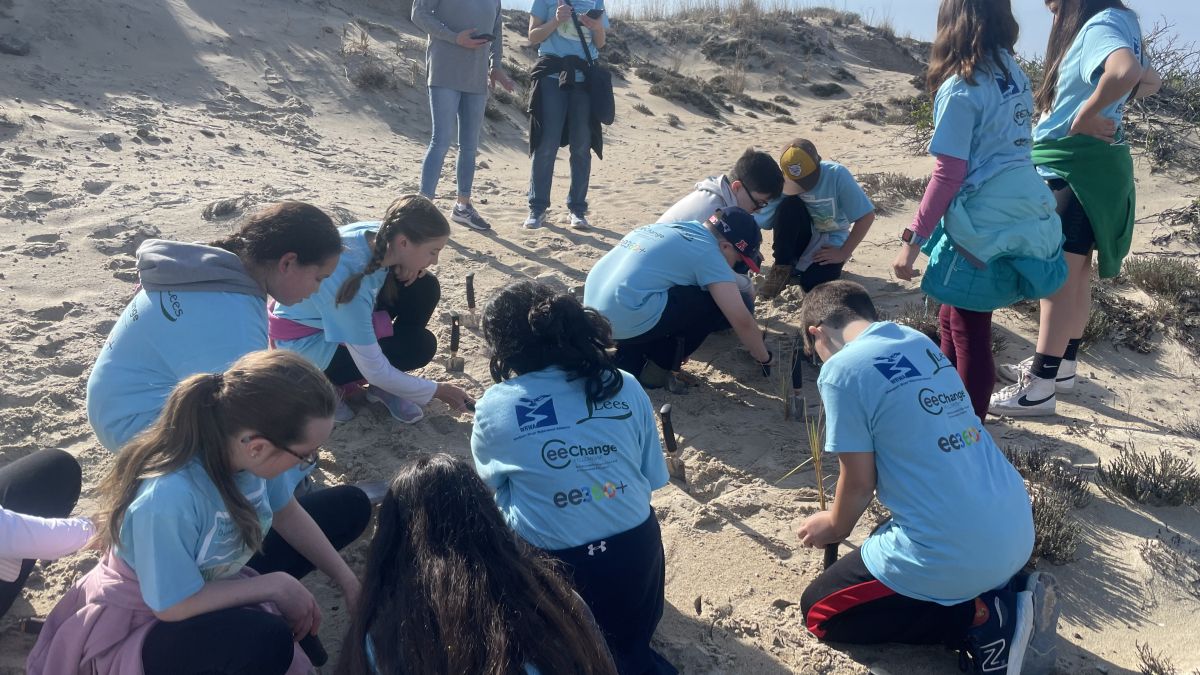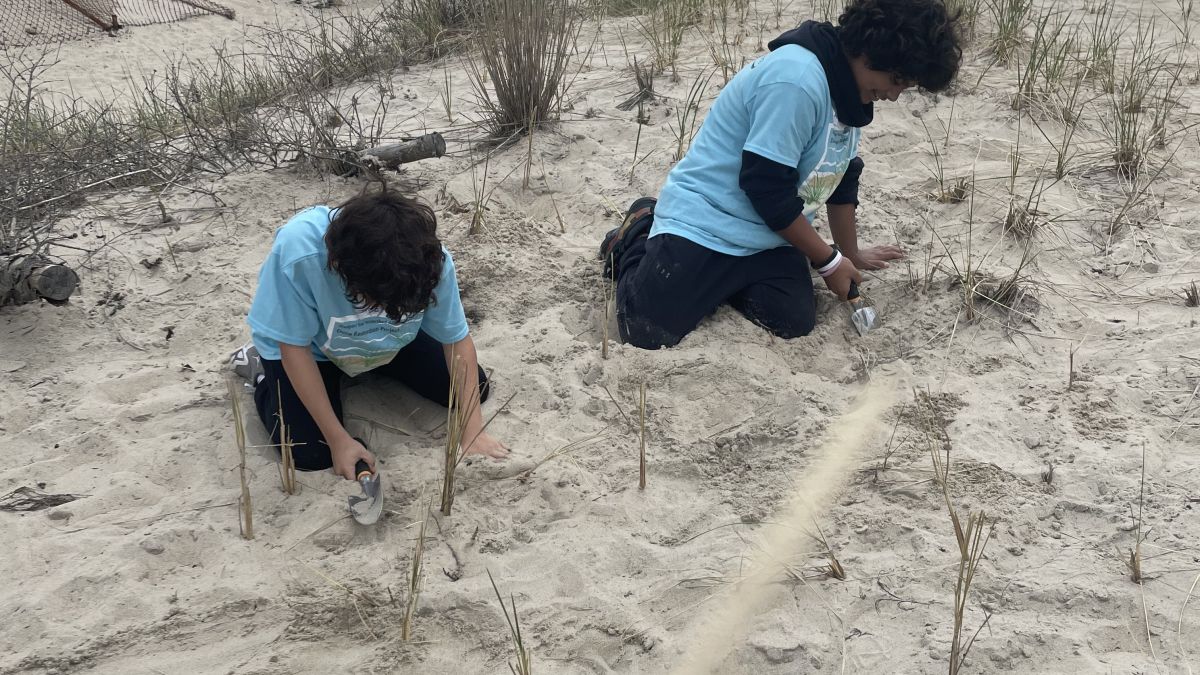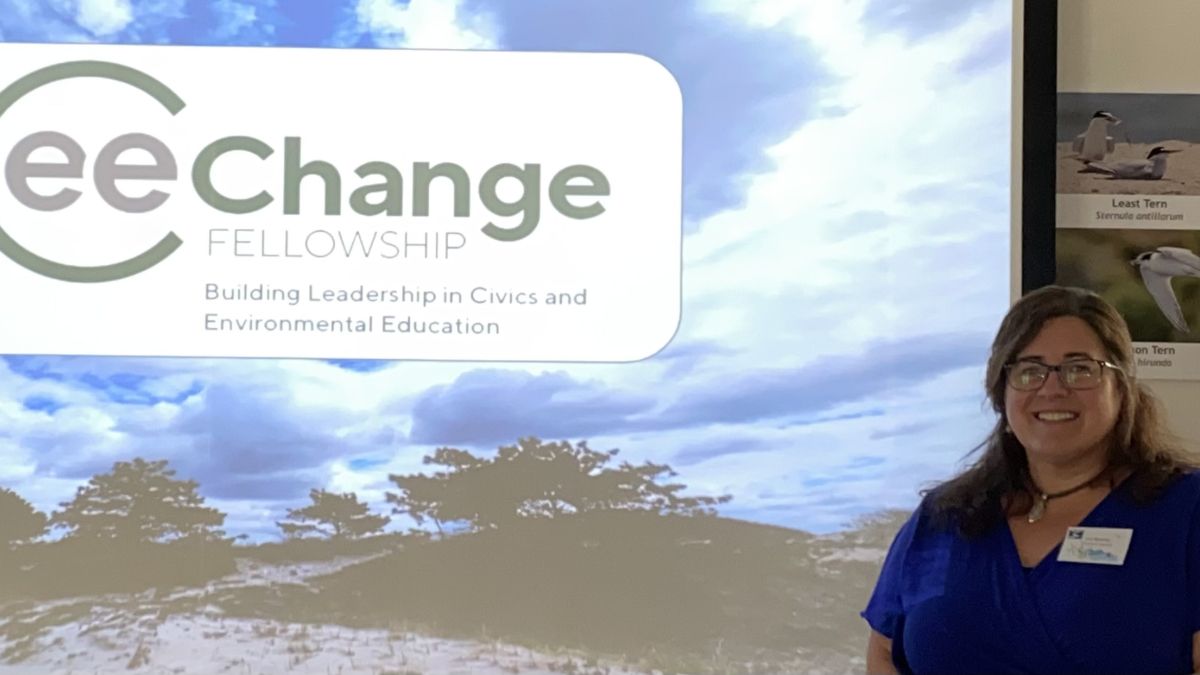From Classroom to Coastline: 5th Graders Dig Into Climate Solutions

Each month, NAAEE shares narratives from the CEE-Change Fellows as they implement their community action projects and work to strengthen environmental education and civic engagement capabilities, all supporting the mission of cleaner air, land, and water. Join us on their journey! The Civics and Environmental Education (CEE) Change Fellowship is NAAEE’s newest initiative to support leadership and innovation in civics and environmental education in North America. This ee360+ program is a partnership between NAAEE, U.S. EPA, and the Cedar Tree Foundation.
A Seasoned Educator CEE’zes’ Change
For nearly 30 years, my journey in environmental education has been a deeply rewarding exploration of nature, science, hands-on learning, and community engagement. I've seen the world of environmental education continuously evolving, and I've had the privilege of being at the forefront of that change while serving my organization, state, and region. Having a wide breadth of experiences and accomplishments in this field, I was still surprised to be selected for the Civics and Environmental Education (CEE)-Change Fellowship since my proposal lacked true civic engagement, aside from 5th graders helping the community by planting American beachgrass during an annual dune field study. I am so grateful NAAEE took a chance on me! After all of these years, I never would have imagined the CEE-Change Fellowship would end up being one of the most impactful experiences of my career, and that it would change me and the way I approach education. Learning directly from leaders in civic engagement and climate resilience, as well as 29 other fellows in my cohort, helped open my eyes to the potential of creating a more holistic educational experience that could foster knowledge, environmental stewardship, and a sense of civic duty.
Climate in the Classroom
My Community Action Project incorporates climate education into the 5th grade curriculum offered by the Westport River Watershed Alliance, in Westport, Massachusetts, where I work as the Director of Education. Since these students were already helping to make the coast more resilient to the impacts of climate change by planting grasses in the dunes each year, it was the perfect grade to start with. This year, we added a classroom session prior to the field study in which students reviewed the fundamental differences between habitats and ecosystems, learned about the importance of the non-living elements within a dune ecosystem, and then received an introduction to weather, climate, climate change, and impacts on our coast. This session was designed to spark curiosity and prepare students for what was to come in the field trip to the dunes.
By building a strong foundation of knowledge, we could ensure that the students were ready to fully engage with the hands-on experiences that followed. It was also an opportunity to introduce them to the idea that their actions, no matter how small, can have a significant impact on the environment and that our organization was dedicated to helping them make a difference in their community.


Students tackle climate issues faced by Westport. Photo credit: Westport River Watershed Alliance
Hands-On Learning: A Field Study with a Purpose
Students have been planting beach grass at the dunes for a number of years. Traditionally this field study gave students a chance to collect shells on the beach, do a water filtration activity, and visit the dune bogs to learn about carnivorous plants. This fellowship inspired a complete change for their outdoor learning experience. Stations now include:
1. The Greenhouse Effect - Students review the causes of climate change and then play a game that simulates how heat is trapped by greenhouse gasses in our atmosphere. Students start off as light rays from the sun and then run through the earth’s atmosphere to the earth in the center where they heat up and then try to escape back out of the atmosphere without being trapped by atmospheric carbon. During each round real world examples were provided that either added or removed carbon.
2. Impacts of Sea Level Rise on Coastal Birds - Students are introduced to piping plovers and least terns, two species of concern in MA, get to view enclosures for their protection and learn how state efforts have had positive effects for these species in this state. They then play a game that simulates how these birds travel to different areas on the beach for feeding, resting, and nesting and how they migrate south. During each round, different areas are impacted by storms, sea level rise, collapsing dunes, etc and students begin to understand how climate change can impact animals that rely on the beach for survival.
3. Dune restoration - In addition to planting the grass, this station now also includes a lesson on the adaptations of beach grass and how they help to stabilize the dune. We also reinforce how this project makes their coast more resilient to storms and that these students are already changemakers in their community. This real-world connection helps students see the tangible impact of their actions, fostering a sense of ownership and responsibility for their local environment.
4. Interpretive hike - During this walk, students get to experience the different zones within the dune and learn about the changing plant communities, their adaptations, and the important role they play in the health of the dunes.

5th graders playing a greenhouse effect game. Photo credit: Westport River Watershed Alliance

During field study, 5th graders plant American Beach grass. Photo credit: Westport River Watershed Alliance

During field study, 5th graders plant American Beach grass. Photo credit: Westport River Watershed Alliance
Bringing It Full Circle: Civic Engagement and the Climate Resilience Committee
The final component of the curriculum was the addition of a post-visit to the classrooms. During this session, we shifted our focus from environmental science to civic engagement, introducing students to their town's climate resilience committee. We explained the committee's role in planning for and responding to climate-related challenges, emphasizing the importance of community involvement in these efforts.
To make the experience even more impactful, each student was invited to choose a subcommittee to serve on. These were based on Westport’s current subcommittees and addressed actual issues identified by these working groups. Students could choose to work on saltmarsh loss in the water subcommittee, help pollinators in the agriculture subcommittee, plan for extreme heat in the public health committee, or how to provide climate education to various age groups in the outreach committee. After brainstorming for twenty minutes, each subcommittee presented their suggestions to the class and then everyone else was given the opportunity to provide their ideas for that group. The best part? Their ideas were shared with the leaders of the actual climate resilience committee, on September 19th.
This project is giving these students a real voice in their community’s future. This experience not only reinforced the lessons they had learned but also empowered them to see themselves as active participants in their community's decision-making process.

Kim Botelho getting ready to present the CEE-Change Fellowship to the community. Photo credit: Westport River Watershed Alliance
Reflecting on the Journey
The changes we made to the fifth-grade curriculum were more than just educational innovations; they were steps toward cultivating a more resilient and empowered community. Looking back on this journey, I am filled with pride for what the students accomplished and excited to see how their ideas will be used. I am also inspired to continue incorporating civics and environmental education. It has proven to be a powerful tool in fostering a community of students who know they can make a difference, even at a young age.


